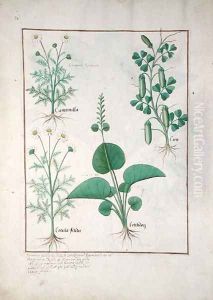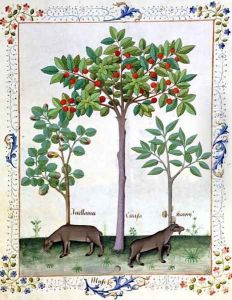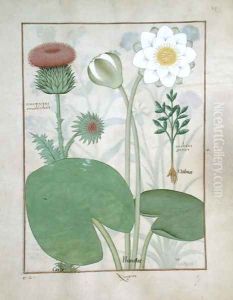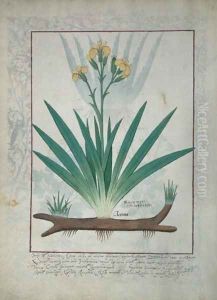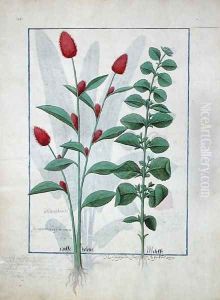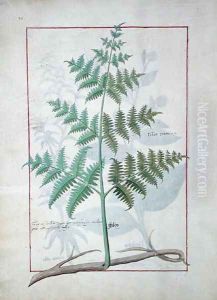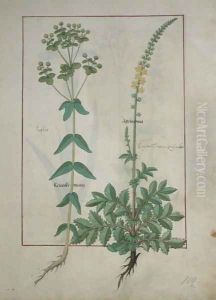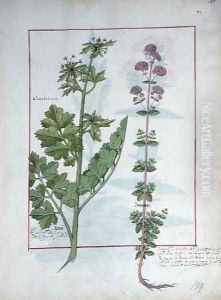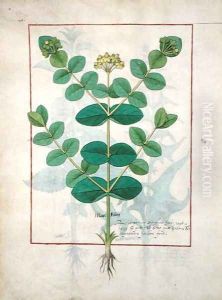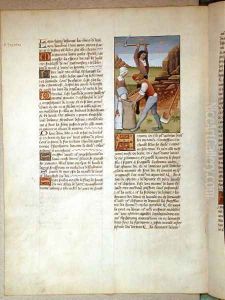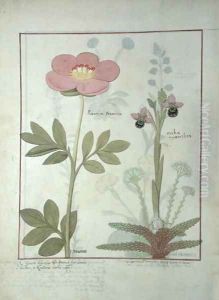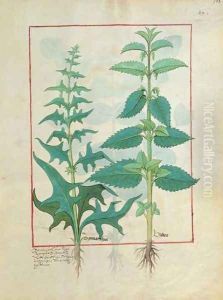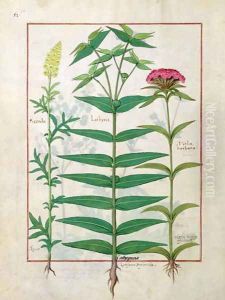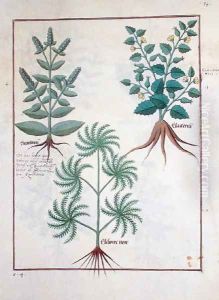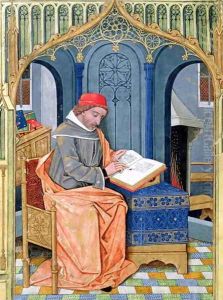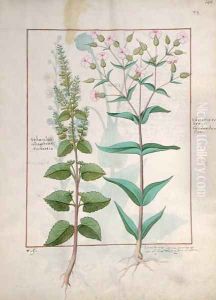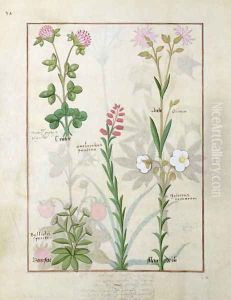





Top row- Red clover and Aube. Bottom row- Bellidis species, Onobrychis and Hyssopus nemorum, illustration from The Book of Simple Medicines, by Mattheaus Platearius d.c.1161 c.1470
-
About Reproduction
Discover the allure of art with our faithful reproduction of "Top row- Red clover and Aube. Bottom row- Bellidis species, Onobrychis and Hyssopus nemorum, illustration from The Book of Simple Medicines, by Mattheaus Platearius d.c.1161 c.1470", originally brought to life by the talented Robinet Testard. Unlike posters or prints, our hand-painted oil painting breathes an unique sense of depth and texture into your space. Every detail, every stroke, and every texture is meticulously recreated, paying the perfect homage to Robinet Testard and his artistic vision.
Owning this piece is more than just decoration - it's a statement of your refined taste in art. Let the vibrant colors and intricate details of this replica serve as a daily reminder of the beauty in our world. Elevate your decor and appreciate the richness of art with our replica of this masterpiece.
-
Painting Description
The illustration from "The Book of Simple Medicines" by Mattheaus Platearius, dating back to circa 1161 and later reproduced around 1470 by Robinet Testard, is a remarkable example of medieval botanical art. This specific illustration features a detailed depiction of various medicinal plants, organized in two rows. The top row showcases Red Clover (Trifolium pratense) and Aube, while the bottom row includes Bellidis species (commonly known as daisies), Onobrychis (commonly known as sainfoin), and Hyssopus nemorum (a type of hyssop).
"The Book of Simple Medicines," also known as "Circa Instans," is a significant medieval pharmacopeia that compiles the medicinal knowledge of the time. Mattheaus Platearius, a physician from the renowned medical school of Salerno, authored this work, which became a cornerstone in the study and application of herbal medicine during the Middle Ages. The book was later illuminated by Robinet Testard, a French artist known for his detailed and vibrant manuscript illustrations.
Red Clover, depicted in the top row, has been historically valued for its medicinal properties, particularly in treating respiratory issues and skin conditions. Aube, although less commonly referenced in modern texts, was similarly noted for its therapeutic uses. The bottom row features Bellidis species, which were traditionally used for their anti-inflammatory and wound-healing properties. Onobrychis, or sainfoin, was recognized for its benefits in treating digestive disorders and as a forage crop. Hyssopus nemorum, a variant of hyssop, was utilized for its antiseptic and expectorant qualities.
Robinet Testard's illustration not only serves as a botanical reference but also as an artistic representation of the medieval understanding of plant-based medicine. The meticulous detail and vibrant colors highlight the importance of these plants in historical medical practices and provide insight into the botanical knowledge of the era. This illustration is a testament to the intersection of art and science in medieval manuscripts, reflecting the era's dedication to documenting and preserving medicinal knowledge.
-
Lead Time & Shipping
When you order this oil painting replica, it typically takes 2-3 weeks to paint. If the artwork is more complex, it might need a little more time to ensure the best quality. Once it's ready, we'll send you a photo for your approval. After you give the green light, we'll ship it to you for free.
-
Return & Refund
We believe in the quality of our hand-painted oil painting reproductions, and your satisfaction is our priority. If for any reason, you are not completely satisfied with your purchase, we offer a 45-day return policy. You can return your artwork within 45 days of receipt and receive a full refund. Please note that the artwork must be returned in the original packaging and in the same condition as it was received.





